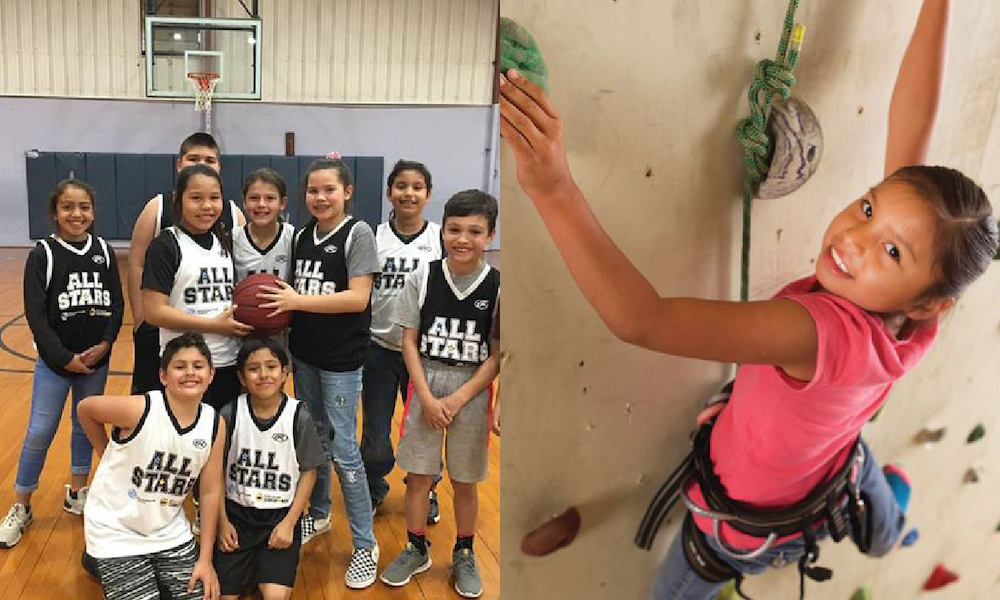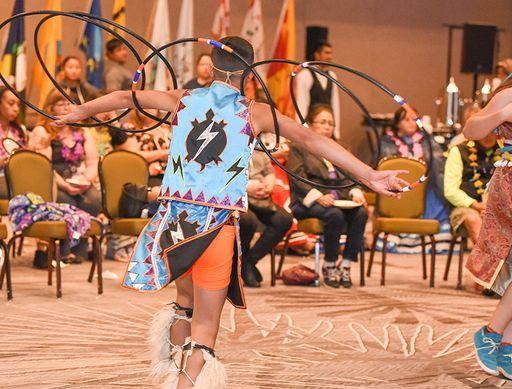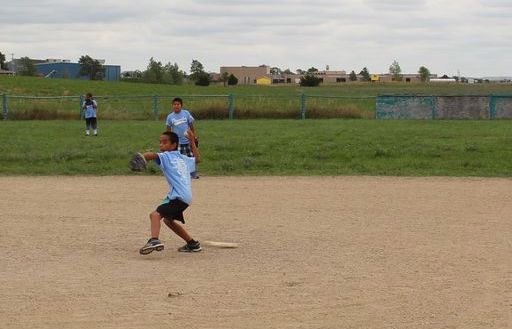
Indigenous Communities in Focus:
Boys & Girls Clubs of America’s Commitment to Native youth
August 5, 2022
On August 9, Beyond Sport will join the world in celebrating the United Nations’ International Day of the World’s Indigenous Peoples. Indigenous Peoples make up around six percent of the global population, numbering an estimated 476 million worldwide. As the World Bank describes, they represent “distinct social and cultural groups that share collective ancestral ties to the lands and natural resources where they live, occupy or from which they have been displaced.” In recognition, this month we are taking a special focus on sport for development organizations within our network that serve Indigenous communities.
Today, we’re highlighting Boys & Girls Clubs of America’s Native Services program. The organization's National Vice President of Native Services, Carla Knapp spoke to us about their work to engage and support American Indian, Alaska Native, Native Hawaiian and American Samoan youth.
Founded by three women in 1860, Boys & Girls Clubs of America supports all young people in "reaching their full potential as productive, caring, responsible citizens.” Through nearly 5,000 Boys & Girls Clubs, the organization offers high-impact youth development programs, adult mentors, fun and friendship on a daily basis with programming that promotes academic success, character development, leadership training and healthy lifestyles. Clubs are located in cities, towns, public housing and on Native lands, providing safe spaces for kids and teens to access mentors, meals, education, sport and more.
For the last 30 years, the organization has also been the largest youth service provider to Native young people in the United States. Its 231 Native Clubs reach over 120,000 youth in partnership with over 150 American Indian, Alaska Native, American Samoan and Hawaiian Tribal communities in 28 states. The organization's Native Services Unit is committed to strengthening the cultural identity of Native youth through programming that promotes “positive youth development along critical cultural, social, emotional, intellectual and physical dimensions through sustainable organizations.”
The Native Boys & Girls Clubs are customized to help young people deepen their connection with the heritage of Tribal traditions and cultures. Knapp feels that this is important because Native communities face different challenges compared to other American children and teenagers. More than 1 in 3 Native youth live in households facing poverty and Native communities face nearly twice the rate of violent crime compared to the general population. Only 68% of Native youth are on track to graduate from high school on time.
“Native young people and their communities face inequities and hardships that started from the first day European ships arrived on this continent in 1492. Poverty has been built into our history as a people, from stolen lands and new diseases to policies that would go on to devastate our Native economies and deny our rights. Culturally, our historical trauma stays with us and is very real in present-day.”

Knapp, herself a proud member of the Penobscot Indian Nation and child of the Bear Clan, shared that “it feels like there’s an opportunity in this more culturally-connected world to reclaim our stories and our history – and for other people to recognize and respect them.”
Every Native Club looks and functions uniquely based on the Tribe, community and region it serves, but all provide safe places for kids to learn, grow and build great futures. “For many kids, in Indigenous communities and elsewhere, there isn’t a safe place to go after school, and they can end up experimenting with risky habits and feeling isolated and alone. Afterschool programs like Boys & Girls Clubs of America provide, safety, fun and community after school and during the summers, where kids aged 6-18 can be active, and learn more about their Tribe and community.”
The organization adapted one of its most popular national sports programs, ALL STARS, for Native youth to participate in sports leagues. The curriculum encompasses year-round programming for youth aged between 6 - 18 which includes flag football, cheer teams, basketball leagues and traditional dance. The program intends to get more youth on more teams playing more often, while fostering a sense of belonging and building life skills and self-confidence. "Native communities are already deeply connected to nature and sports give youth fun ways to experience the outdoors, socialize and be active. While they're having fun, they're learning about their culture, growing their confidence and building healthy habits," said Knapp.
ALL STARS encourages Clubs to include their traditional sports such as stickball, canoeing and running so that it more closely meets the needs and interests of Native youth. The Native-adapted ALL STARS program also includes an emphasis on local, Indigenous foods to better support nutrition and help combat the health risks that are most common in Native communities, such as Type-2 diabetes.

"I love playing sports! It gives me a chance to hang out with my friends, and helps me make new friends too!" said Tai, a Native Club participant. "I am not the best athlete now, but playing sports isn’t only about winning; it’s about having fun. My coaches are really awesome. They encourage us to do our best and have fun. The uniforms we have are so cool! They even gave us water bottles and bags that I take with me everywhere, so I can show team spirit wherever I am. Since I was a little girl, I have looked up to female athletes. And, maybe if I practice and get better, I can play in school. I’m really happy I got involved in sports at my Boys & Girls Club."
In February 2013, the partnership between Boys & Girls Clubs of America and communities with Native Clubs strengthened even more with the development of the organization's Native Services Unit which helps navigate Tribal and community needs to ensure Native Clubs are successful and sustainable. Made up of diverse Native heritage, the Native Services Unit staff personally understands the culture and challenges facing Native youth and is more capable to provide support that is positively impactful.
In November, Boys & Girls Clubs of America will celebrate 30 years of serving Native youth at its Native Summit which brings together Native Clubs and staff to learn best practices, recognize successes and plan for the year ahead. Alongside this, Boys & Girls Clubs of America will be sharing stories of Native youth and Clubs across its website and social media channels in recognition of Native American Heritage Month in November.
Knapp also shared that the organization will launch its Indigenous Connections group in the coming months across its 231 Native Clubs. This employee resource group works to provide networking and learning opportunities that foster an acceptance of the diverse cultures of Indigenous people and inclusive spaces.
“In my culture, we believe in the ‘seven generations,’” said Knapp. “We understand the many generations who came before us – what they endured for us, as well as the strengths they’ve passed on to us – and we must, in turn, do our part to ensure the next generation is set up to thrive.” Boys & Girls Clubs of America Native Clubs are a way to support and strengthen the next generation of Indigenous youth and carry on the rich culture.